Article
Napoleon's "Prison" on Elba
Author(s):
The little island of Elba lies about seven miles off the west coast of Italy, and it was once the prison of Napoleon, who escaped after less than a year.
The little island of Elba lies about seven miles off the west coast of Italy. It is the country’s third largest island after the more substantial islands of Sicily and Sardinia. As part of the land mass once connecting the Italian peninsula with Corsica to the west, the island is 400 million years.
At a mere 86 square miles it is larger than California’s Catalina Island but smaller than Martha’s Vineyard. Part of the National Park of the Tuscan Archipelago, Elba has become popular with tourists.
Tourist destinations are always looking for an advertising edge in their marketing. For many —
as in the hotel world —
the claim could be location. But even beautiful places need something extra these days such as ease of access, cost or climate —
acceptable
but not just an climate. It has to be warm. Italy wins on many issues. It has the history and it has its inhabitants, surely the most delightfully kind and most irritatingly lethargic people in Europe (but that’s another story).
Photography by the authorsElba has seen many owners in its time: Etruscan landlords, then wealthy Romans who mined its huge deposits of iron. Then the Medici established a base here to fight the pirates, both Corsican and Saracen. Then the Spanish came and the English and the German and the French. But always, thank goodness, the Italians.
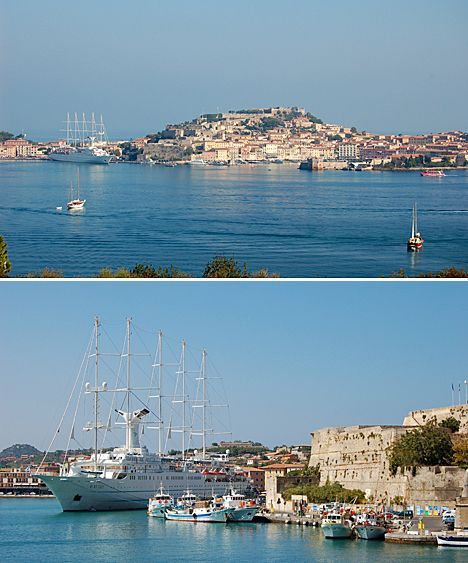
Wind Surf
Elba’s 90 miles of winding coastline is home to several fishing villages and a harbor for many yachts. The largest town, Portoferraio, has become a favorite destination for small cruise ships such as Windstar’s ,which brings us to this now peaceful little island.
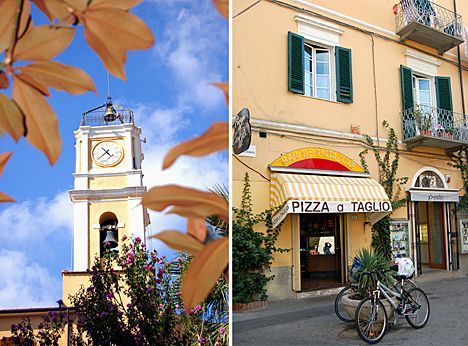
Peaceful because at the time of our fall visit there is no other cruise ship in town and most residents seem to be at Mass although we do discover two cyclists having — what else in Italy? —
p
izza.
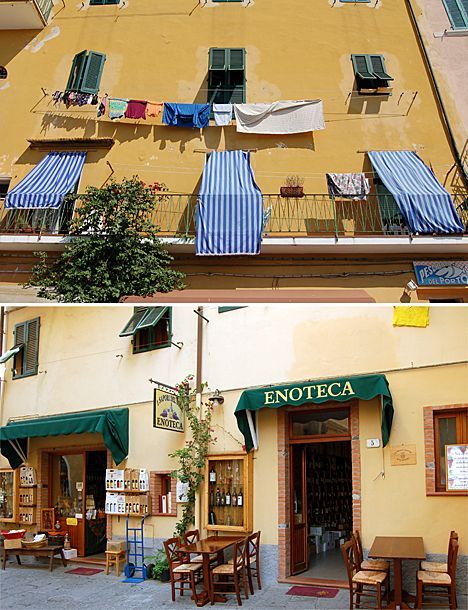
Kodachrome Lyrics
The colors become intense as our Sunday advances. The few tourists we meet, all waving cameras, are delighted with what one calls his “Kodachrome moment.” He sings a snatch of Paul Simon’s to us as we walk past. We grin at him and wander on. It would be tempting simply to sit in the sun, but this is a fascinating place so we meander on.
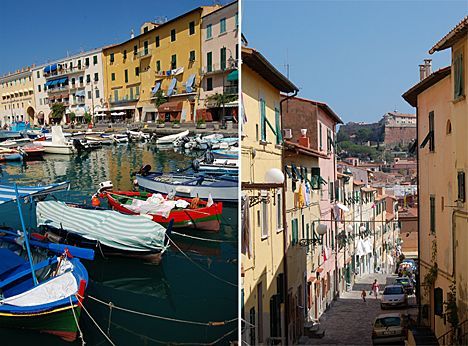
We walk up and up and come to the sign near a bread shop that we are looking for: Villa dei Mulini —
the house of the windmills. It sits beside the old lighthouse overlooking the harbor. The windmills have long gone, but the villa remains as a testament to its most famous occupant, or rather prisoner, Napoleon.
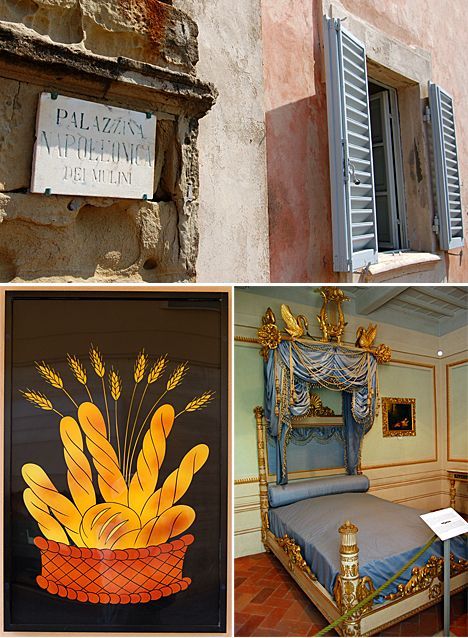
King of Rome Sleeping,
Napoleon was finally overcome by the overwhelming size of the Allied armies. He abdicated and came to Elba as a prisoner on May 4, 1814. He had a most elegant prison, a palace on a cliff above the harbor. His decorated gilt bed draped in lavish silk dominates his bedroom. To the right of it hangs a copy of the “celebrated portrait by Pierre-Paul Prud’hon depicting the Napoleon’s sole legitimate son and heir to the throne.”
Napoleon came with a retinue of 1,000 men and was given the title of the Emperor of Elba with jurisdiction over the population of 35,000 residents. It was a far cry, nevertheless, from his previous position of power when his armies conquered Europe during the 16 years of the Napoleonic Wars.
The Emperor fared better on the little island of Elba that many men in Europe’s history. It was not unusual in that continent’s centuries for even powerful monarchs to languish in prison. Philip, King of France, challenged Pope Boniface and threw him into a castle cell in 1303. Queen Elizabeth of England had her cousin Mary, Queen of Scots imprisoned and later executed in 1587.
Napoleon attacked the Catholic Church so ferociously in 1798 “that out of 380 states with direct allegiance to Papacy only 30 survived.” He even put Pope Pius VI in prison.

The bedrooms include one with a gorgeous red silk canopy, although the guest lying in bed would have to endure the imperial stare of Napoleon’s bust. More interesting would be the island’s lighthouse reflected in the glass of the open French doors.
Napoleon escaped from Elba on February 26, 1815, and headed for Paris to overthrow Louis XVIII and regain control of his reduced army. Ahead lay his famous 100 Day Campaign, and his ultimate defeat at Waterloo, where some historians suggest an attack of prolapsed piles diverted him for his usual brilliant military strategy.

The details of his “escape” are murky and worth a web search. One suspicion is he was allowed to escape so he could receive his final defeat and thus resolve the problem of this difficult Frenchman. He was eventually exiled to the island of St. Helena in the south Atlantic where he died at the age of 52 in 1821. The cause of death was probably of gastric carcinoma, despite a rumor that has hung around for almost 200 years that suggests he might have been poisoned with arsenic.
But this is not the stuff to think about now we are sitting in the harbor in the Enoteca winery, leaning against the cool rock wall in its cellar and nursing our Chianti.
The Man Who Cried Orange: Stories from a Doctor's Life.
The Andersons, who live in San Diego, are the resident travel & cruise columnists for Physician's Money Digest. Nancy is a former nursing educator, Eric a retired MD. The one-time president of the NH Academy of Family Practice, Eric is the only physician in the Society of American Travel Writers. He has also written five books, the last called




